If Longyearbyen was a little piece of the Continent in Svalbard – or more like a little piece of the world, considering all the people we met from all over there – then Barentsburg was something different entirely. A little piece of Russia, to be precise.
The Russian coal mining settlement of Barentsburg is home to about 500 people. By Daniel Hug
A Russian settlement and coal mining town just a five-hour sail away from Longyearbyen in neighboring Grønfjord, Barentsburg is home to around 500 people, the majority of whom are Ukrainians, followed by Russians. We also met quite a few laborers from Tajikistan who were keen to talk with Dani about German soccer stars (Schweinsteiger!). Named for the Dutch explorer Willem Barentsz, Barentsburg is home to one of the northernmost Lenin statues (everything in these parts is labeled “northernmost”) as well a ramshackle collection of old timber houses, a museum devoted to the Pomor history in Svalbard and one very tidy and welcoming hotel and restaurant/brewery in the middle of town.
Not the northernmost Lenin statue (that´s in Pyramiden), but close. In Barentsburg.By Daniel Hug
Ivan, our Russian sailor, had been especially looking forward to visiting Barentsburg and the other Russian sites near Longyearbyen ever since we left mainland Norway. But unkind winds kept up from getting up to Pyramiden, an abandoned Russian town that a well-traveled friend had described to me as the most bizarre place she’d ever seen. So we knew we had to make the most of our time in Barentsburg.
Barba moored up alongside a friendly Russian tug boat in Barentsburg. By Andreas
Within seconds of mooring up at the floating dock, under the shadow of the still-in-use coal conveyors and storage pits cut into the hillside above us, Ivan crossed his first fellow countrymen. He proceeded to arrange for us a sauna session at the nearby hotel. It felt a bit indulgent considering we’d just enjoyed our fair share of hot showers while in Longyearbyen and weren’t even properly dirty yet. But the creature comforts are so much more enjoyable when you know you’ll all too soon be deprived of them again.
Soaking in the sauna, Russian-style, at the one hotel in Barentsburg.By Daniel Hug
So we headed to the hotel and soaked in a super-hot sauna then followed it up with a delicious Russian meal at the Red Bear Brewery restaurant, complete with Ivan’s obligatory “50 grams of cognac.” The saying has become a bit of a buzz phrase on Barba thanks to Ivan, and “cognac” usually refers to vodka but could also mean a shot of gin, whiskey or, rarely, actual cognac. Russian sailors employ vodka to keep warm, ward off colds and all kinds of other uses, Ivan tells us. And the percentage of alcohol the “cognac” contains should increase with the degrees in latitude one finds oneself north. It’s important to enjoy the vodka with bread and a bit of garlic. And we always end with Ivan’s heart-felt toast to the moment and “Arktika.”
Meeting the Consul General of the Russian Federation at Spitsbergen to Svalbard and his attache in Barentsburg.By Daniel Hug
One night wasn’t enough in Barentsburg. So the next day we had a chance to visit the Consul General of the Russian Federation at Spitsbergen at his office near the Lenin statue. The Consul General was a friendly gentleman who loves speaking French (before Svalbard his posts took him to Monaco and Marseilles). And he was proud to show us the mural of Fridtjof Nansen and the famous Russian Arctic explorer Rusanov in the welcome area, festooned with Norwegian and Russian flags. The Consul General’s attaché was a motivated young translator named Mikhail who invited us to enjoy lunch at the stalovaya – the Soviet-style cafeteria where most of the townspeople eat the next day. We feasted on all kinds of cabbage and beet salads, meat balls and soups (katlety, piraski, borscht, etc.) for what would have cost less than $3 a piece had we not been invited. A far cry from the small fortunes we shelled out in Longyearbyen for burgers, klippfisk and the like.
Visiting a Russian in the hut he was staying in near the old Pomor site in Cape Starostin.By Daniel Hug
We could easily have lingered longer in Barentsburg but we can’t deny the pull north toward the ice, where all the animals we’ve come to see are living. So we sailed out of Barentsburg for Kapp Starostin to see the remains of a Pomor hunting station that has an important place in Svalbard trapper lore thanks to a Russian Pomor who lived here for many decades, overwintering alone, in the 19th century. We met a Russian man living for a few months in a cabin near the ruins here and again we were treated to more polar bear stories. They are apparently all around us, but we just keep narrowly missing them, which feels like both a good and a bad at once. The man had seen a bear just the day before right outside his cabin and said he sees them most days. We bid him farewell and sailed onward to the calm bay at Eidenbukta for the night, where we went for a hike the next day along the stony beach, spotting a few reindeer but again no bears. Then we pulled up the anchor and made our way up to Poolepynten, a popular stop with cruise ships and other boats to see the large male walruses that haul out on the sandy beach here. Most of the walruses we will see on the west coast of Svalbard are males as the females and their pups stay to the east of Nordaustlandet and toward Franz Josef Land.
These two curious faces popped up in perfect sync alongside Barba as we approached Poolepynten.By Daniel Hug
Most firsts in life are a cause for celebration. But it was a particularly good Friday night on Barba when we arrived near Poolepynten and mistook the blows of walruses for whales. When you’ve never seen something before how should you know how it really looks? Well, walruses from a distance looked a like small whale to the crew’s untrained eyes, which we were plenty excited about. So we all were giggling like school kids as we got closer and realized these were no whales. Two ridiculously huge walruses (I had no idea how big these animals really are – they are sheer blubbery mass) poked their heads up to check us out at exactly the same moment within a few meters of Barba. And we took turns dinghy-ing in to the beach for a closer look at the animals, too, which lounge much like puppies or kids watching TV (they made me think of my four nieces). They lay right next to eachother and seem to insist on almost always touching and scratching under their whiskers or bellies much like an inertia-bound man on a couch. When one among them does something untoward there’s a momentary flurry of irritation and tusk-brandishing before things settle down again. It was a riot to watch. I could have stayed on that beach all night. But at 2AM, the sun still blazing brightly bright enough to require sunglasses, we decided it was time to sail on toward Ny-Ålesund in time for Saturday night and a last hurrah in civilization.
Hanging out with some Indian scientists here in Ny-Ålesund from Goa to study glaciers and fjords. We brought out the boat´s collection of captain´s and Norwegian rock band hats to wear. By Terry Ward
And that’s where we found ourselves in port now, surrounded by glaciers and floating ice in this research town with stations for scientists from India, Korea, France, Germany, Norway, Japan and other nations (there’s no US station, and I do wonder why). The winter population here of 40 or so people balloons to 120 in the summer.
A hiker´s view above Ny-Ålesund. By Ivan Kutasov
The Barba crew has a way of arriving in port on just the right night. Saturday is the night to be here as it’s the one night the pub is open. The scientists and researchers take their turns working shifts behind the bar. A nurse who made a boat call today to give me some cold medicine says it’s a wild time. Ny-Ålesund is a town full of young scientists and their eager protégés, most in their 20s and 30s, that hail from all around the world. And most come here for stints of just a few weeks or months in the summer. They work hard and apparently party in equal measure (“I thought it was an earthquake that was shaking the walls in my house at night but after a few times realized it was something else,” the nurse told me about her very communal living quarters).
Locals in Ny-Ålesund told us they´d seen a polar bear stroll through the center of town just a week ago.By Daniel Hug
The polar bear warning signs right on the edge of town are a good indicator that we’re still in a very wild place here, but we have to remind ourselves every time we are back in civilization not to get lax about being bear aware. A policeman on a summer stint here from central Norway told us that one bear wandered through town and by the port last Saturday. And right now, just a few miles from town, there are several bears feasting on a walrus carcass. The nurse told us a story of spotting one recently, too, on a road in town in the middle of the day. And I asked what you can do to be more guard. “Just look around very, very carefully whenever you are outside,” she said, giving me far less comfort that the cold meds had.
And the day must be coming soon, something tells me, when we will look around very carefully and finally see what we’ve been searching for.
Terry
Head of the Barba delegation, Mr. Andreas B. Heide shakes hands with Consul General of the Russian Federation at Spitsbergen, Mr. Yury Gribkov, after a friendly visit at the Russian consulate discussing future Barba expeditions to the Russian Arctic. By Ivan Kutasov
Abandoned timber houses – including one where famous Russian ballerina Maya Plisetskaya once lived – line the hillside in Barentsburg. The town has a mixture of old historical buildings and modern structures. By Ivan Kutasov
Ivan ringing Moscow. This phone by the harbor in Barentsburg still gives a dial tone when you pick up the receiver.By Daniel Hug
Dani celebrating t-shirt weather in the Arctic as we sail out of Barentsburg. By Andreas
Historic Russian hovercraft in Barentsburg.By Daniel Hug
Terry taking it all in during her first taste of Russia in Barentsburg.By Daniel Hug
Andreas and a beach full of walruses at Poolepynten.By Daniel Hug
Terry seeing a walrus for the first time as we approach the beach at Poolepynten.By Daniel Hug
Lounging around after a meal at Poolepynten. Walruses in Svalbard feed mainly on bivalves but occasionally eat seals, too.By Daniel Hug
This guy found the perfect positioning for getting his tusk-rest on. By Terry Ward
Featured photo by Ivan Kutasov.


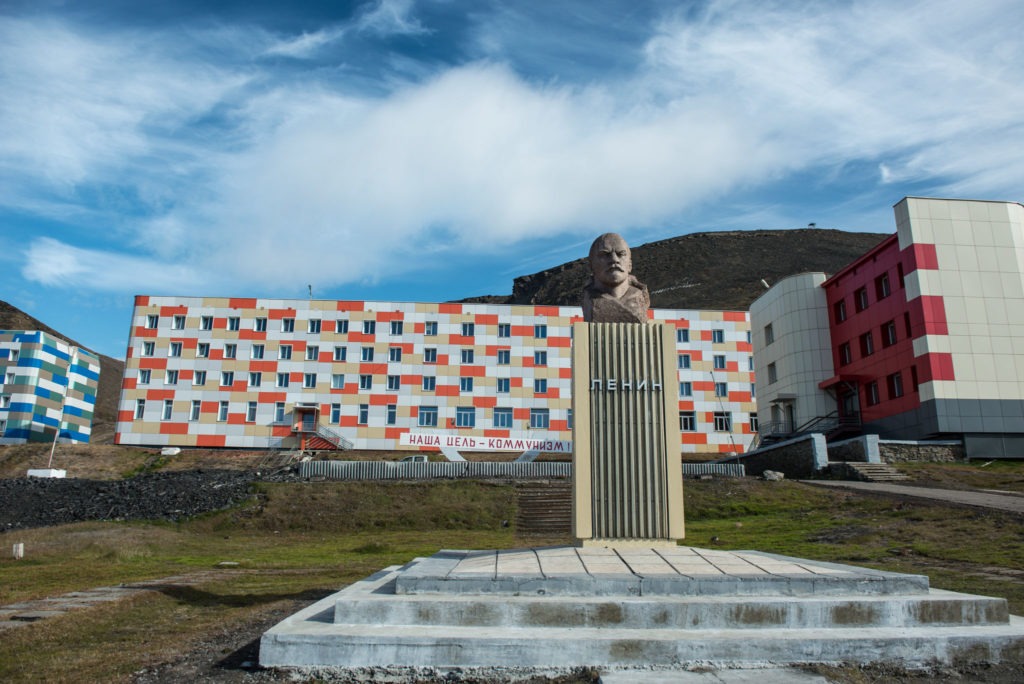
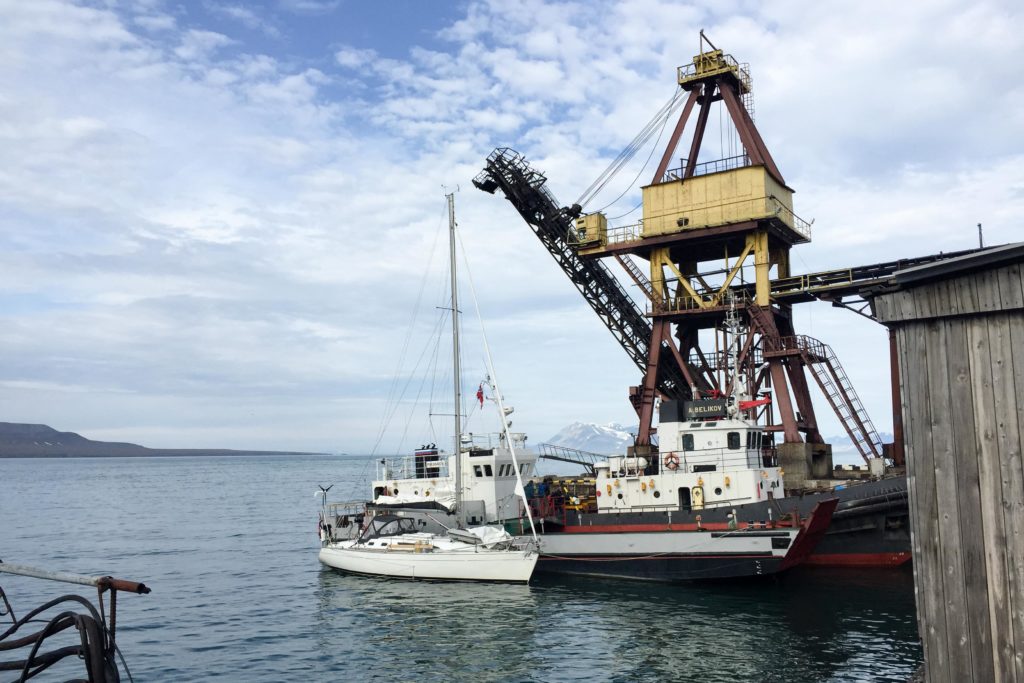
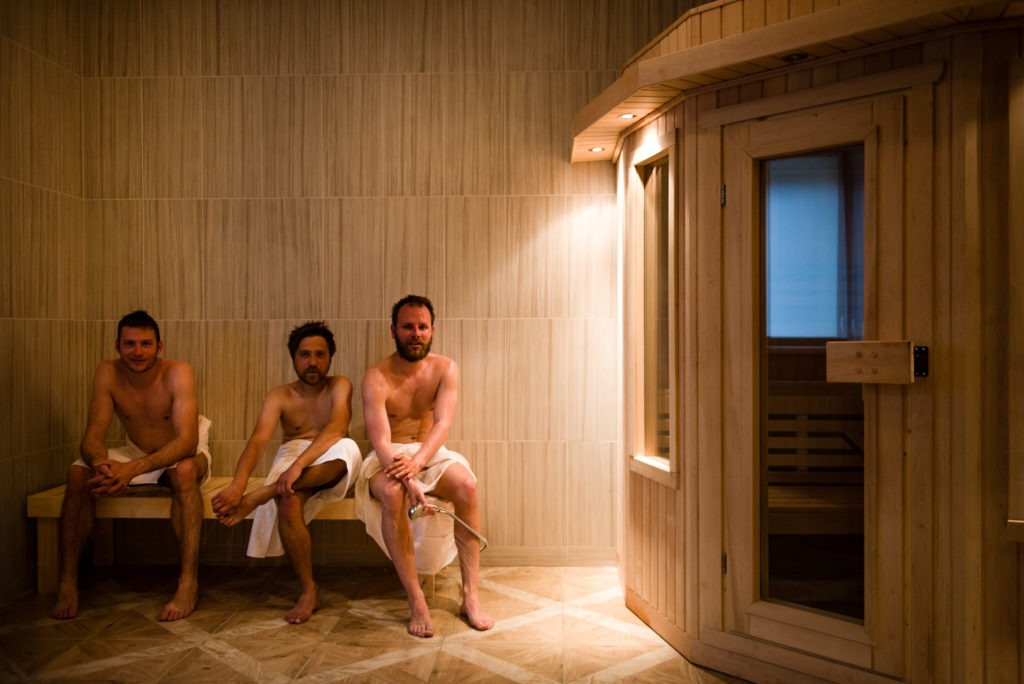
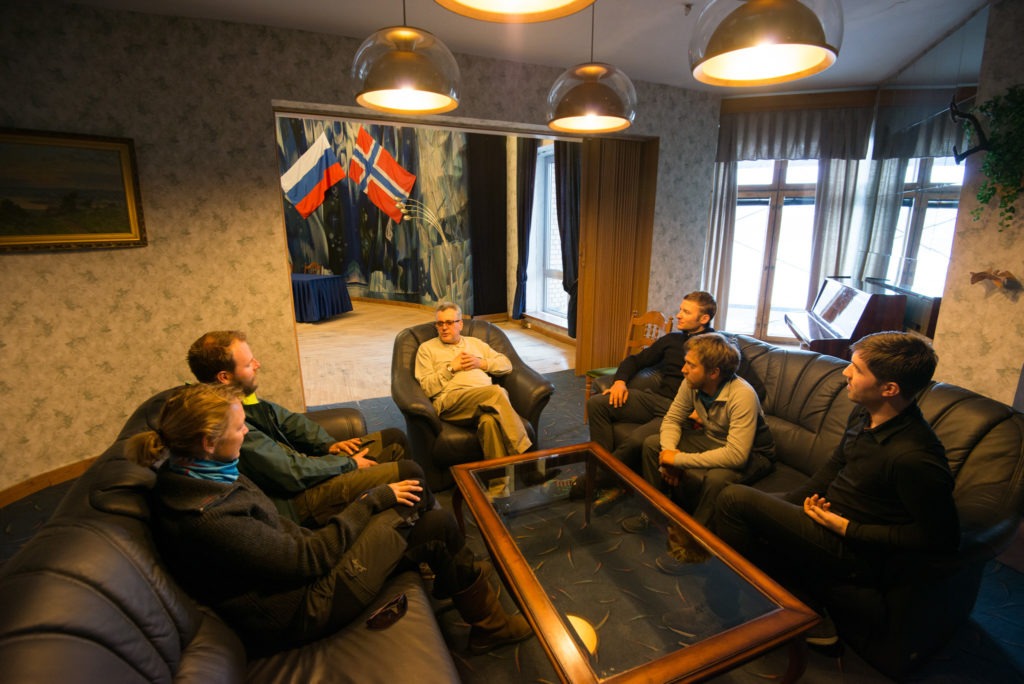
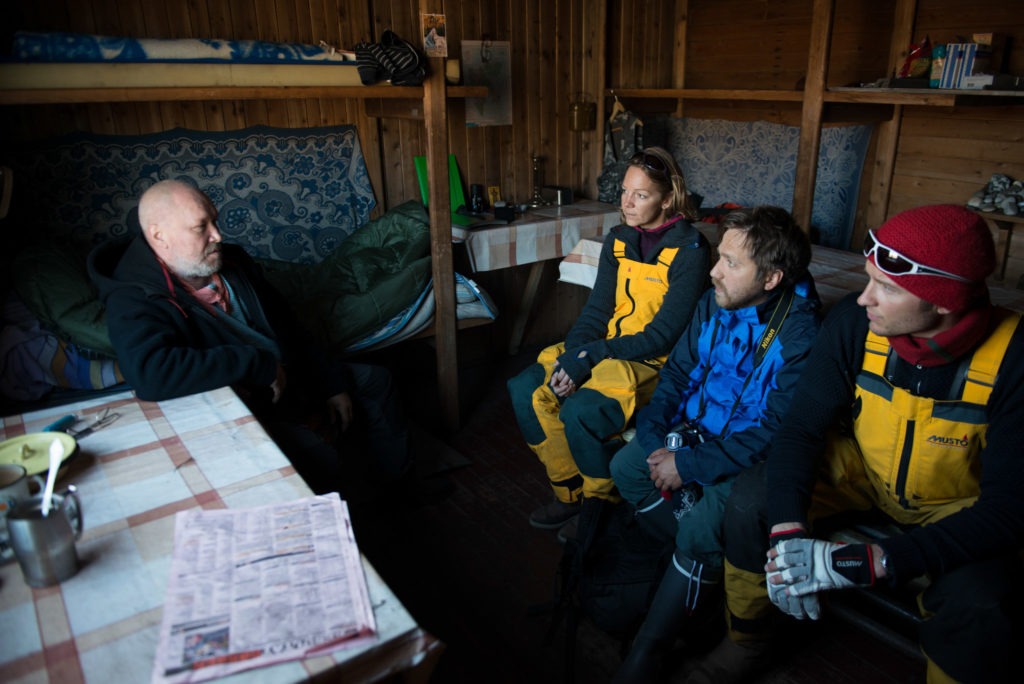
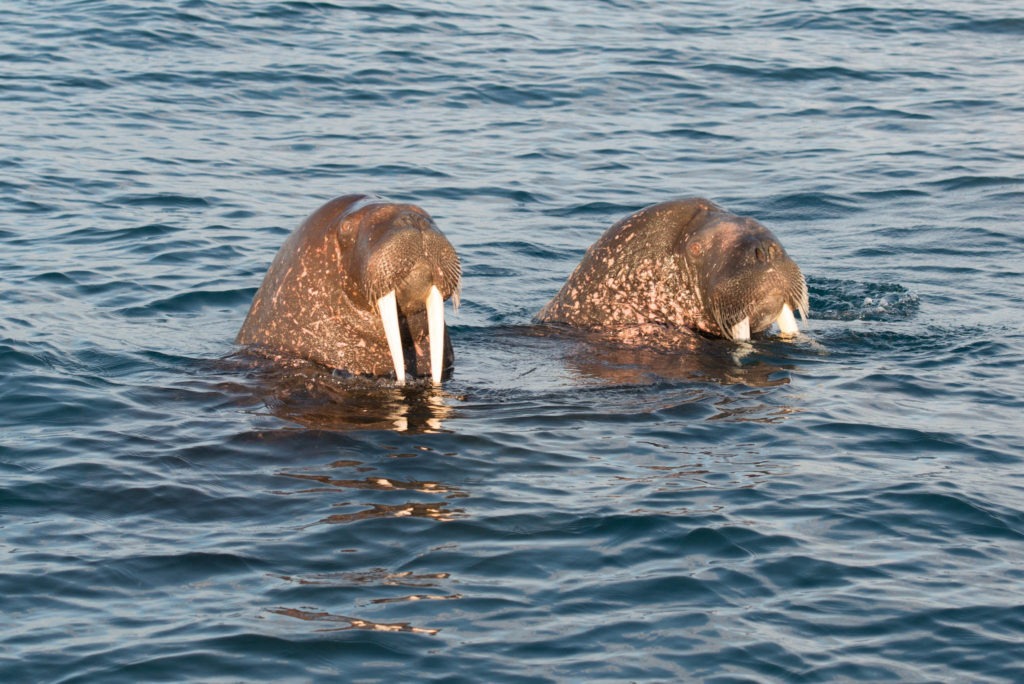
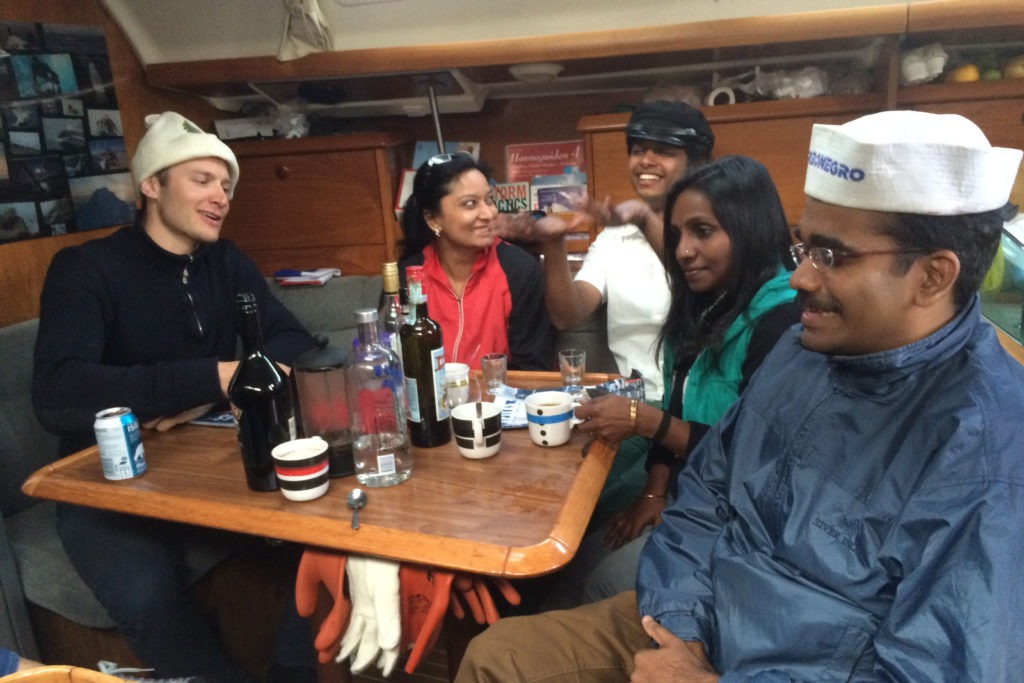
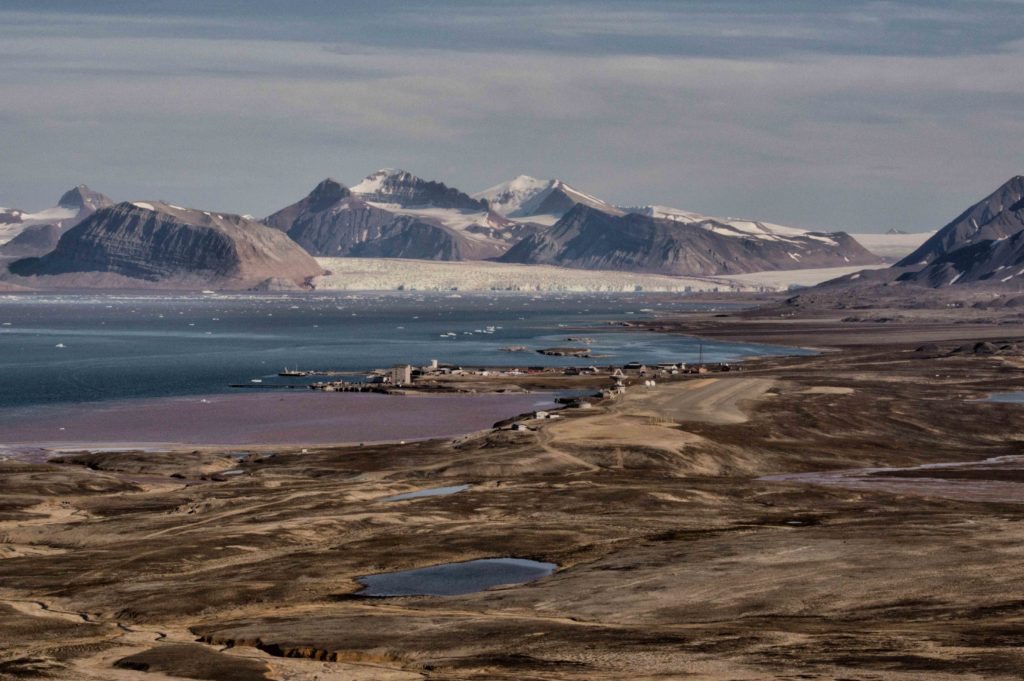
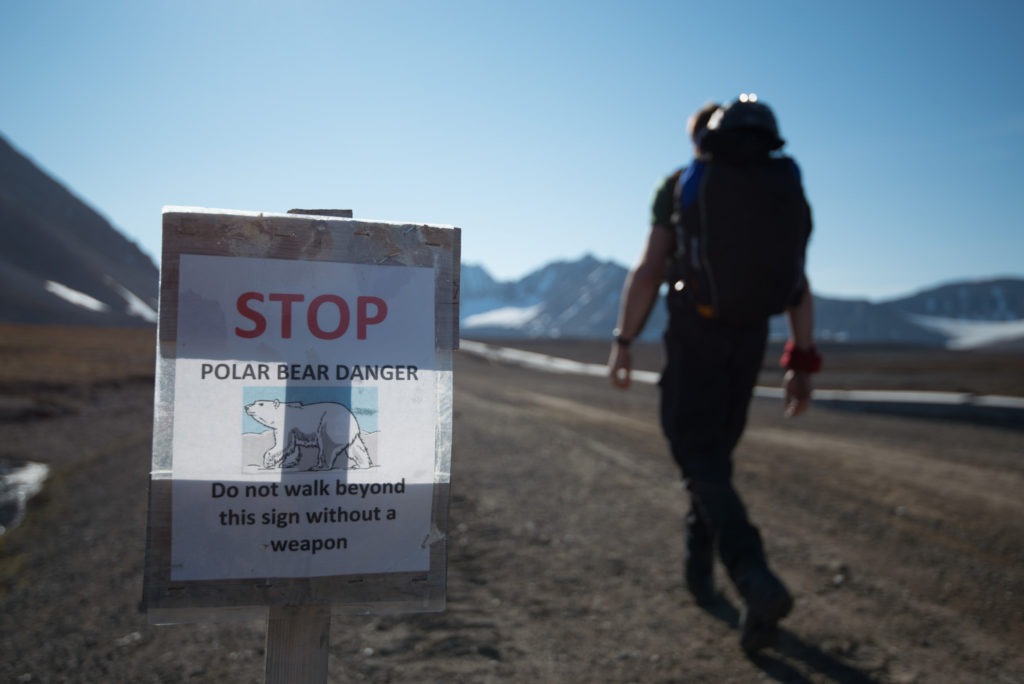
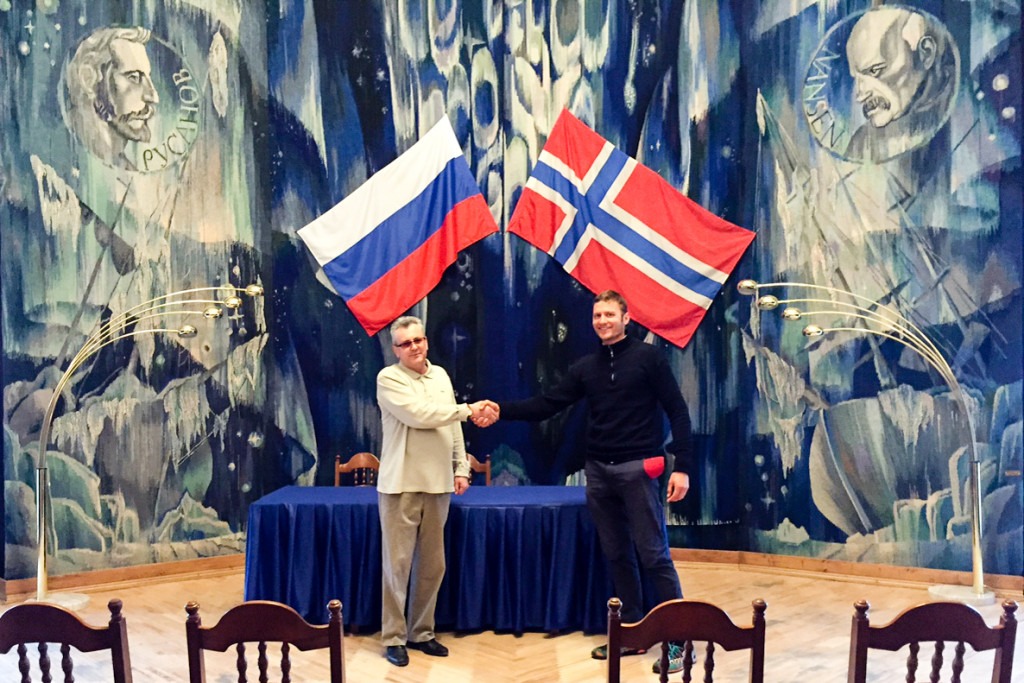
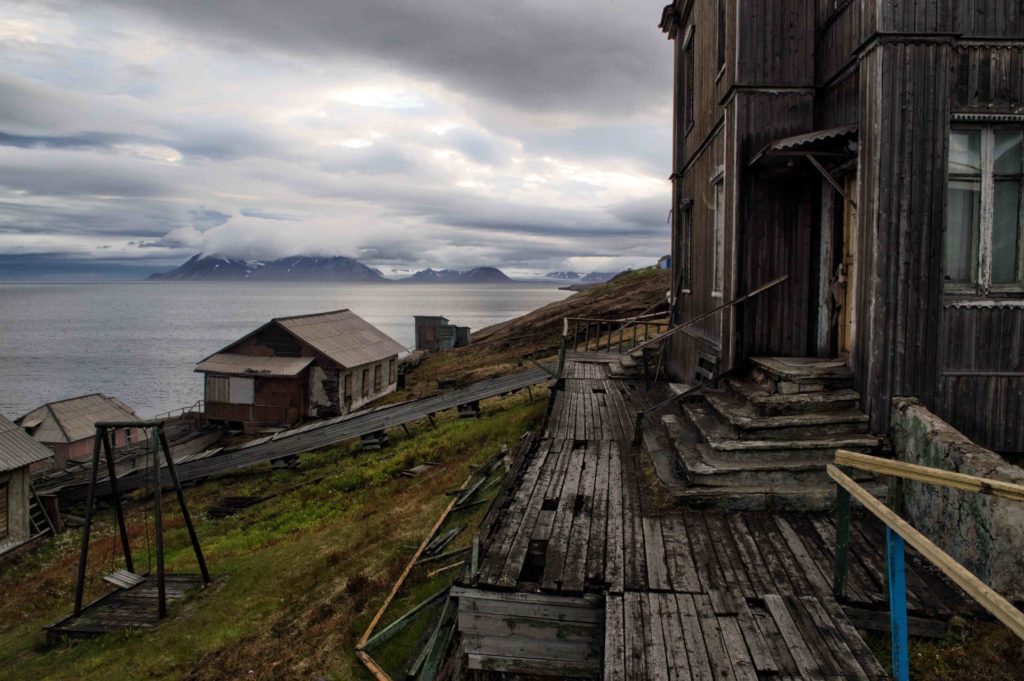
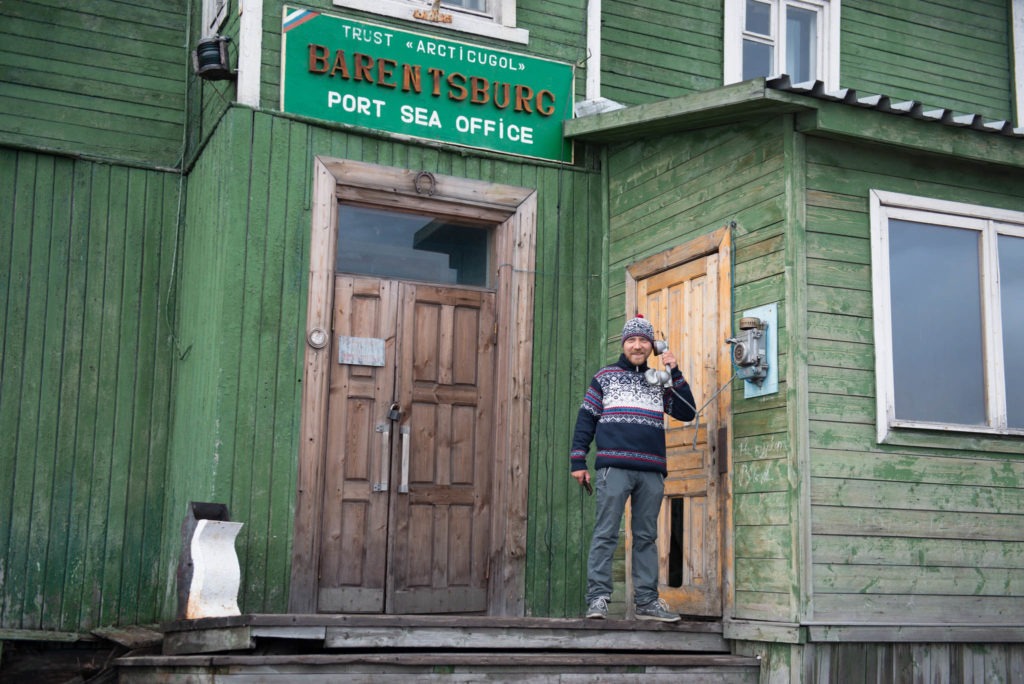
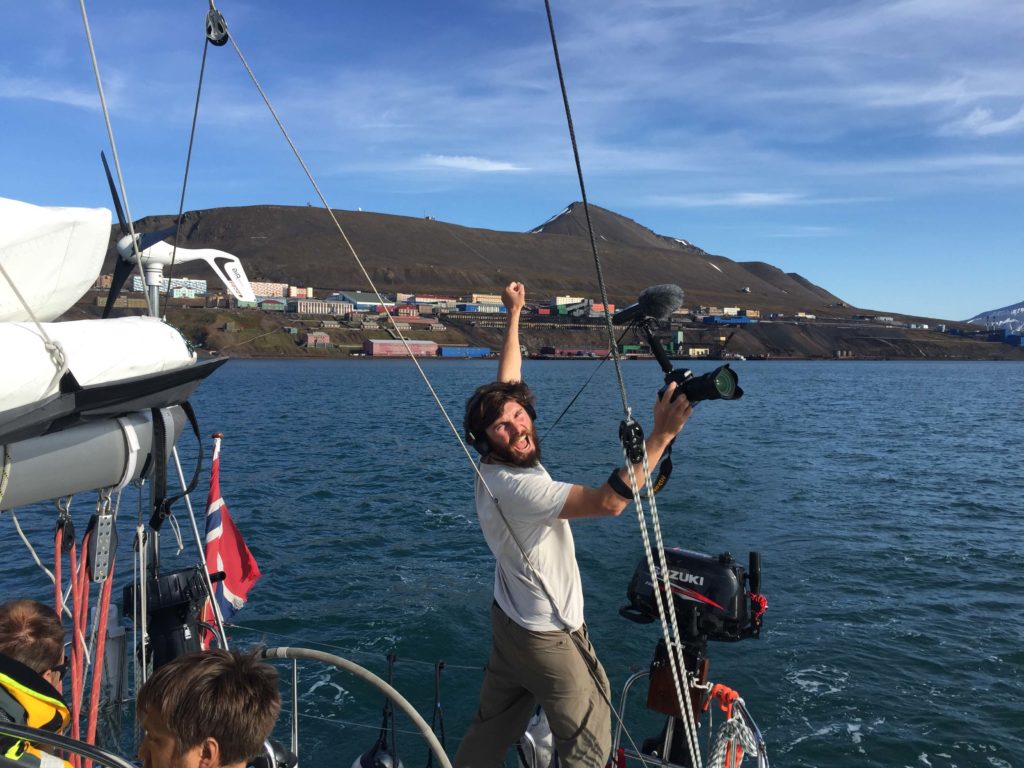

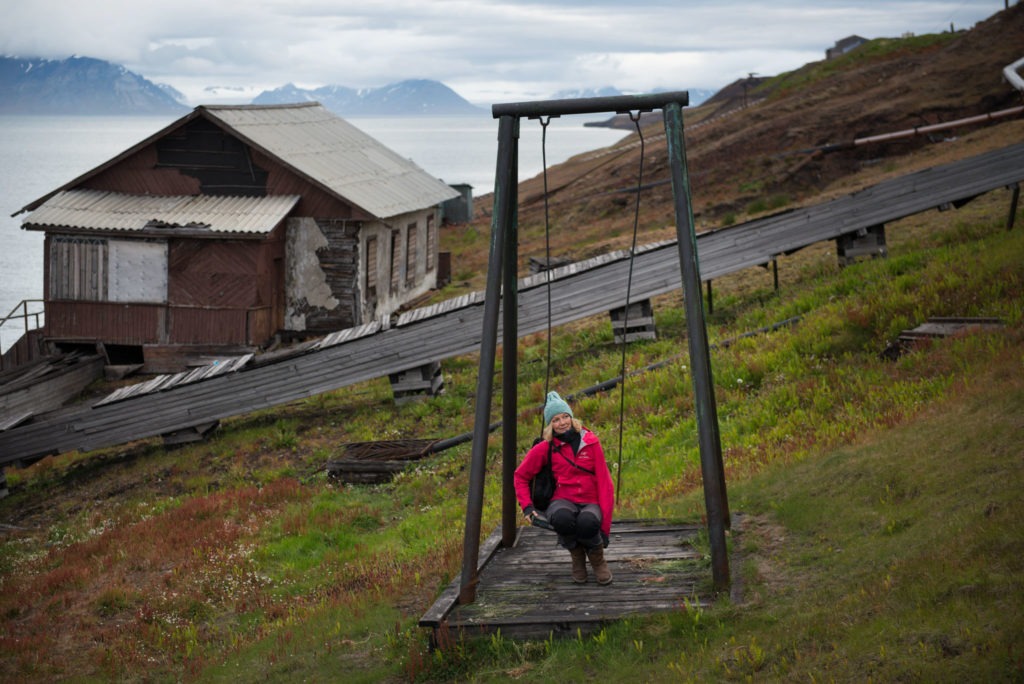
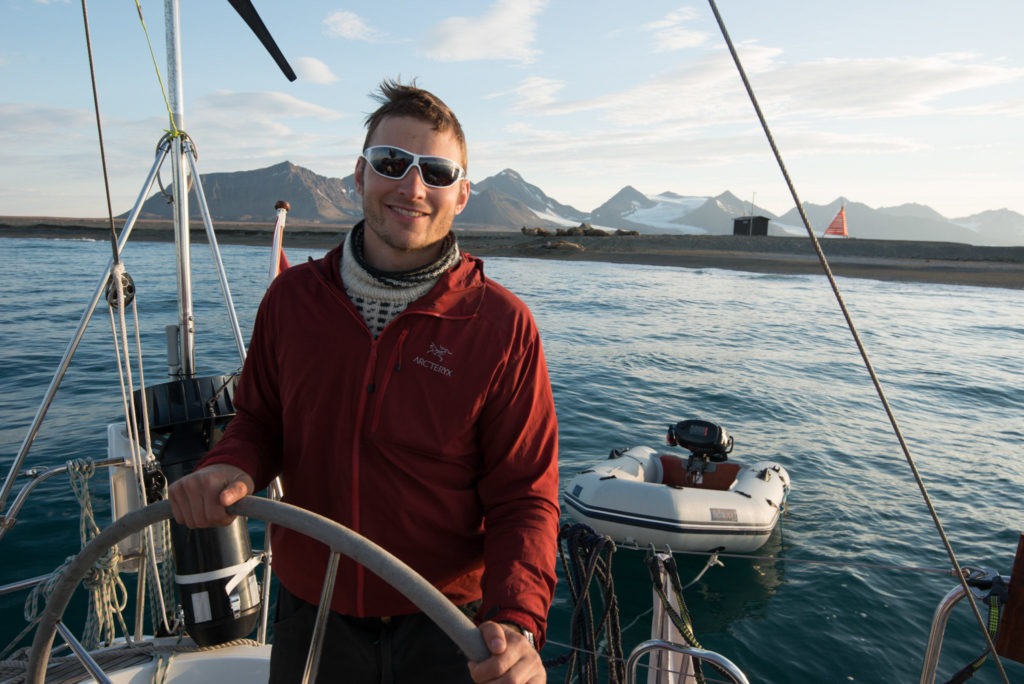
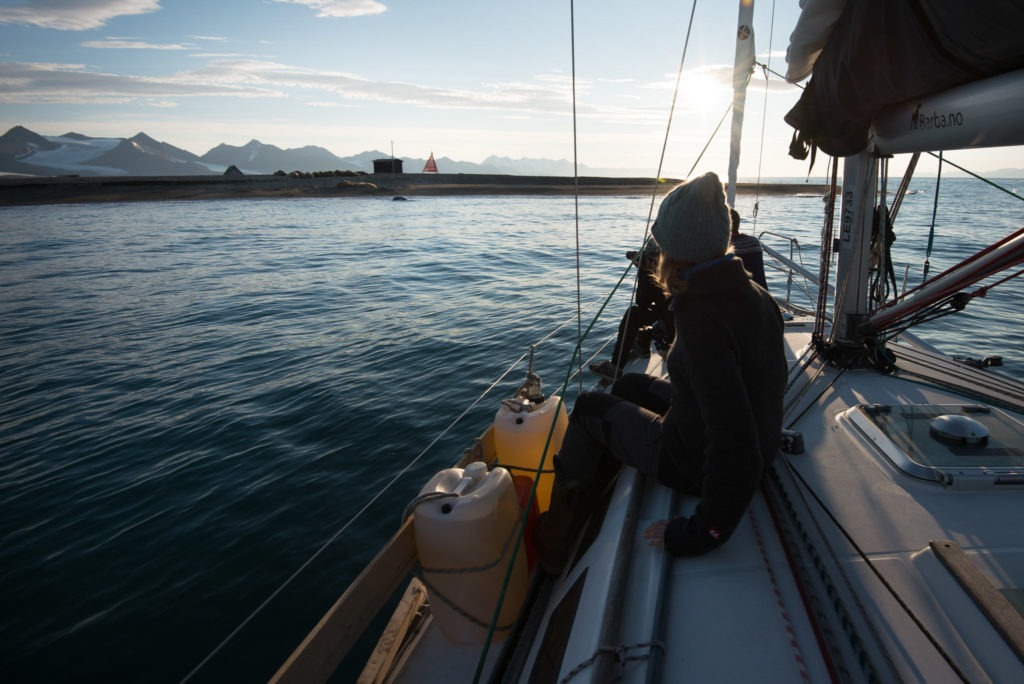
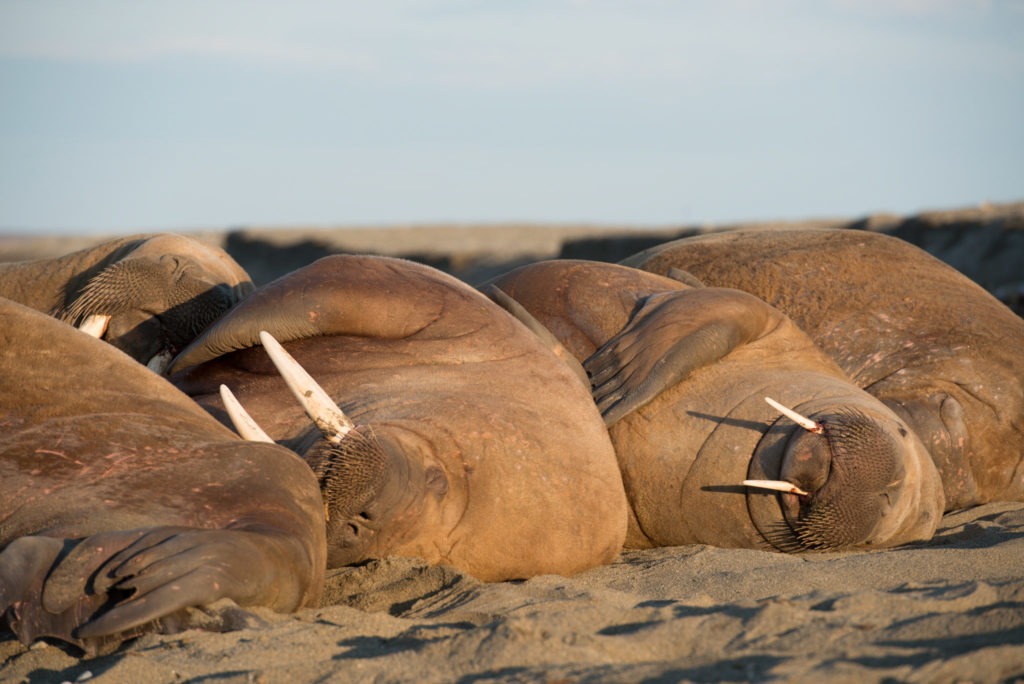
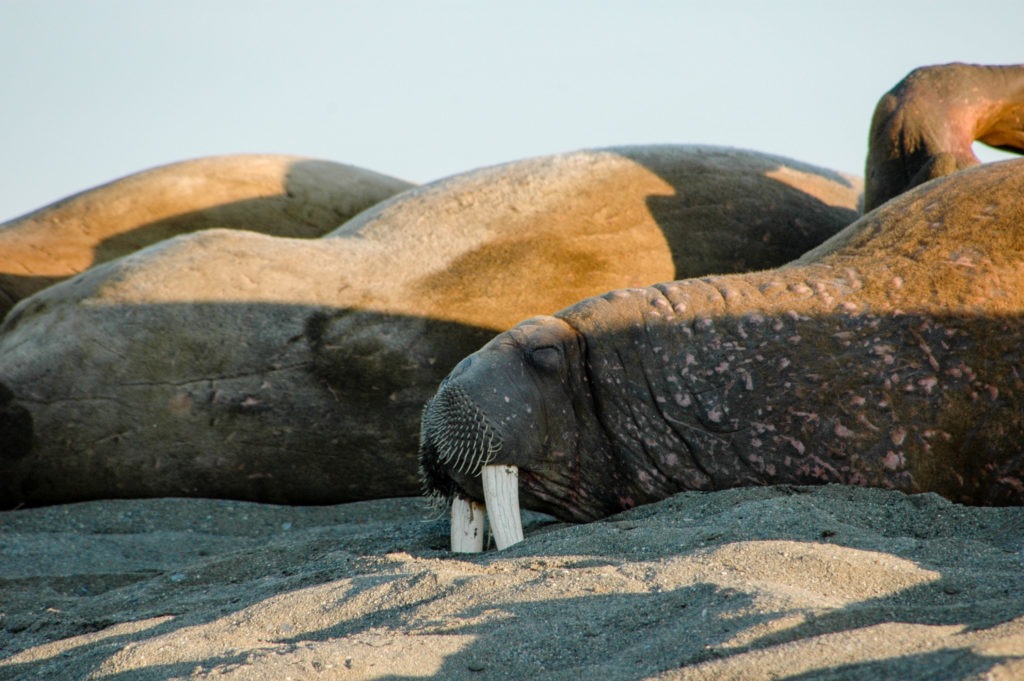

Exellent !!!! Bon Voyage !!!!
I think Barentsburg was my favorite part of the Svalbard experience. So dramatically different than any civilization I’ve ever known.
Love the pictures! Keep ’em coming!
In terms of settlements I very much agree Kristin! Polar bears, arctic ice and walrus encounters are runners up for the first price when it comes to nature sights though 🙂
Double-good post to read. I am going to Svalbard in July and probably would have missed out on Berentsburg.
Now I get to visit that town too. Thank you.
J.P. (Los Angeles, USA)
Enjoy! 🙂